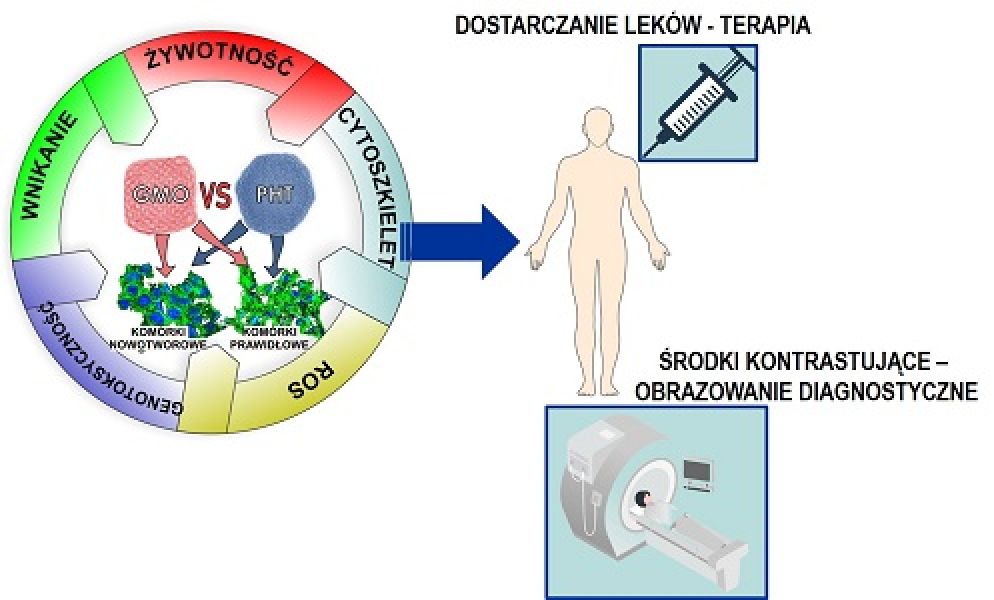Jakub Jagielski, Łucja Przysiecka, Dorota Flak, Magdalena Diak, Zuzanna Pietralik-Molińska, Maciej Kozak, Stefan Jurga, Grzegorz Nowaczyk, Comprehensive and comparative studies on nanocytotoxicity of glyceryl monooleate- and phytantriol-based lipid liquid crystalline nanoparticles, Journal of Nanobiotechnology, 2021, 19(1), 168.
Recently, lipid nanoparticles have found a particular application for the delivery of mRNA in vaccines against the COVID-19 virus (in 2020), which, among others, are used for worldwide vaccination of the human population. Another example of the success of lipid-based nanoparticles is the regulatory approval of Doxil® and Onpattro®, based on lipid nanoparticles containing antitumor doxorubicin and a short interfering siRNA for the treatment of polyneuropathy, respectively.
Despite such measurable successes of lipid nanoparticles, new, intelligent nanosystems are still being searched for, taking into account their use as drugs or contrast agents carriers used in disease diagnostics. A very interesting group are lipid liquid crystalline nanoparticles (LLCNPs), including cubosomes and hexosomes with an internally ordered cubic and hexagonal structure, respectively. LLCNPs owing to their unique properties, offer the solubility of a variety of active drugs/contrast agents of different polarity, increasing their stability and the possibility of controlled delivery. Nevertheless, the most important aspect underlying the use of LLCNP as universal carriers is the unambiguous assessment of their biocompatibility. Although studies on the cytotoxicity of nanoparticles prepared from various lipids and surfactants have been carried out so far, their actual effect on cells (both normal and neoplastic) is not fully understood. Moreover, importantly, the effect of some nanoscale structures can have an unpredictable and completely opposite effect to their macro-counterparts.
Therefore, an interdisciplinary team appointed under the Sonata Bis 6 project at the NanoBioMedical Center AMU (2016/22/E/ST3/00458, Cubosomes-liquid crystalline nanoparticles as potential bioimaging systems, PI – Dr. Grzegorz Nowaczyk) provided in this publication a comprehensive evaluation of cytotoxicity and genotoxicity of LLCNPs, prepared from two lipids, glycerol monooleate (GMO) and phytantriol (PHT) with different lipid and surfactant content, both approved by the Food and Drug Administration (FDA).
The studies were carried out in vitro, i.e. on human cervical cancer cell line and normal fibroblasts. The article presented the mechanism of nanoparticles uptake into cells, the cytotoxicity analysis based on the metabolic activity of cells, the impact of the integrity of the cytoskeleton and the generation of intracellular reactive oxygen species, as well as the evaluation of the expression of selected genes due to the action of nanoparticles. The research results show that nanoparticles made of glycerol monooleate exhibit greater potential as drugs or contrast agents carriers, due to their high biocompatibility and more effective cell internalization.


